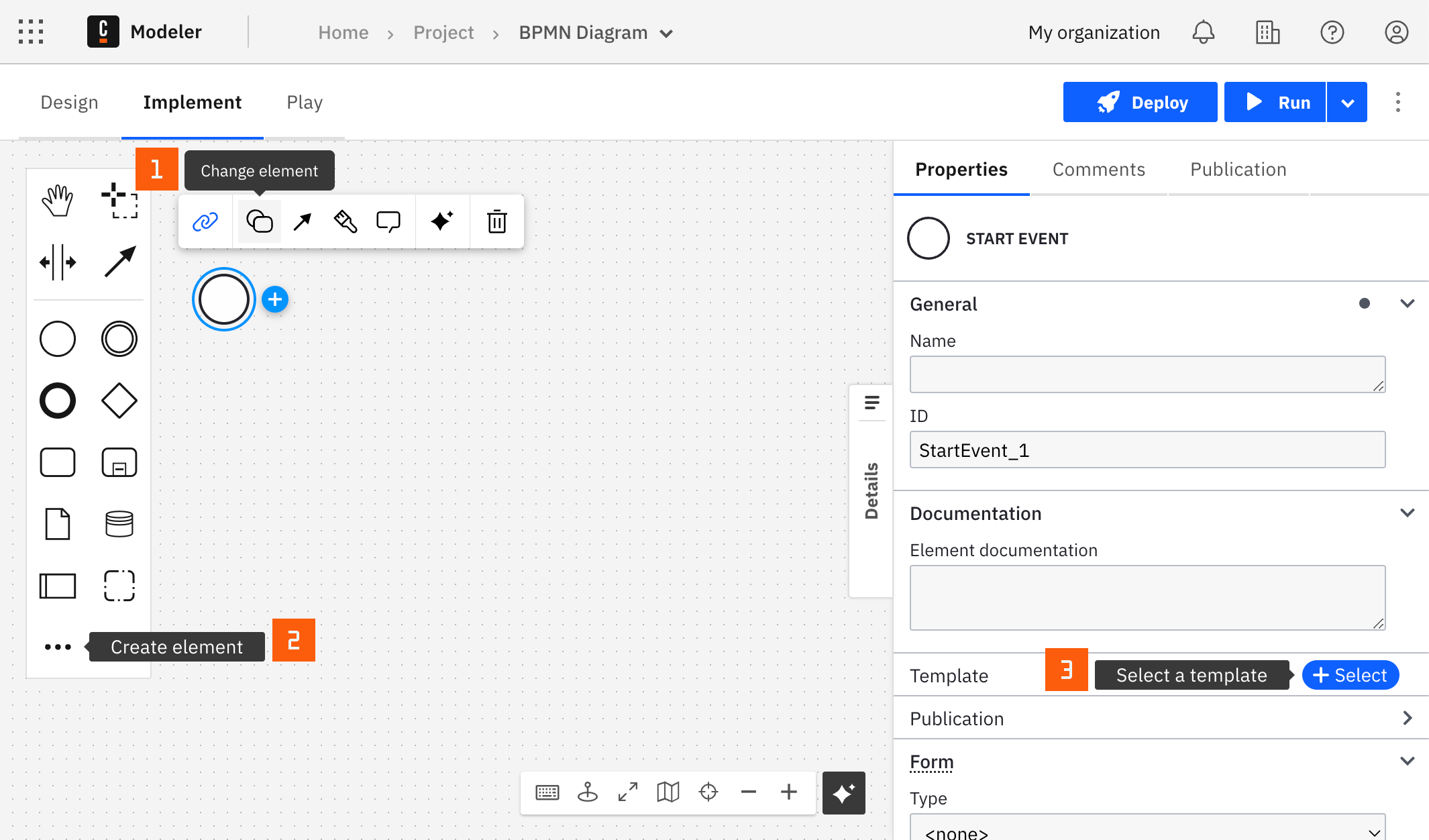Microsoft 365 connector
The Microsoft 365 connector is an outbound connector that allows you to connect your BPMN service with Microsoft 365 mail to send, read e-mails, and manage folders.
Prerequisites
- To use the Microsoft 365 connector, you must have a Microsoft 365 mail instance.
- You might also need to have sufficient access rights at Microsoft Entra to create a new app; set Microsoft Graph permissions and assign an app to u user.
Learn more about creating, configuring, and authorizing Microsoft App.
Use Camunda secrets to avoid exposing your Microsoft credentials as plain text. Refer to our documentation on managing secrets to learn more.
Create a Microsoft 365 connector task
You can apply a connector to a task or event via the append menu. For example:
- From the canvas: Select an element and click the Change element icon to change an existing element, or use the append feature to add a new element to the diagram.
- From the properties panel: Navigate to the Template section and click Select.
- From the side palette: Click the Create element icon.

After you have applied a connector to your element, follow the configuration steps or see using connectors to learn more.
Access control
Each operation requires permissions to be assigned by a system administrator. Learn more about Microsoft permissions.
Bearer token authentication
If you own a bearer token, in the Authentication section select a Bearer token in the Type field. Enter a bearer token in the field Bearer token. Use Camunda secrets to avoid exposing sensitive credentials.
Default TTL for bearer tokens is 3600 seconds. Therefore, this approach might not work for long-living and/or repetitive processes.
OAuth2 client credentials flow authentication
In the client credential flow, an application gets access to all accounts associated with the organization.
For example, if an app has permissions Mail.Read, it will be able to read emails of all users.
To proceed with this step, you'll need the following data:
- OAuth 2.0 token endpoint
- Client ID (Application ID)
- Client secret; can be created on your application page
The app must be assigned to a user.
If you own a bearer token, in the Authentication section select a OAuth 2.0 in the Type field. Enter the above data into the respective fields.
Learn more about creating, configuring, and authorizing Microsoft App.
Select operation to execute
Select the desired operation from the Operations section.
Get user folders
Related Microsoft Graph API: user: list mailFolders
- Enter user's email or system UUID to fetch all their folders in the User ID field.
- You can also pass OData parameters in the Query parameters field.
For example, if you wish to pass an OData $top URL parameter, execute the following:
{
"$top": 10
}
Create mail folder for a user
Related Microsoft Graph API: user: create mailFolder
- Enter user's email or system UUID to fetch all their folders in the User ID field.
- In the Request section, enter a Folder display name string value.
Get user messages
Related Microsoft Graph API: user: list messages
- Enter user's email or system UUID to fetch all their folders in the User ID field.
- You can also pass OData parameters in the Query parameters field.
For example, if you wish to pass an OData $top URL parameter, execute the following:
{
"$top": 10
}
Send mail on behalf of a user
Related Microsoft Graph API: user: sendMail
- Enter user's email or system UUID to fetch all their folders in the User ID field.
- In the Request section, enter a Subject string value.
- Select Body content type from the dropdown.
- Enter desired content in the field Body content.
- Pass an array of emails into the To recipients field, for example
["myuser1@mycompany.com", "myuser2@mycompany.com"]. - (Optional) Pass an array of emails into the CC recipients field, for example
["myuser3@mycompany.com", "myuser4@mycompany.com"].
Handle connector response
The Microsoft 365 connector is a protocol connector, meaning it is built on top of the HTTP REST connector, therefore handling response is still applicable.